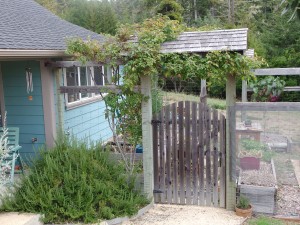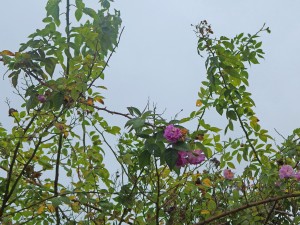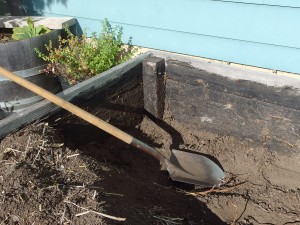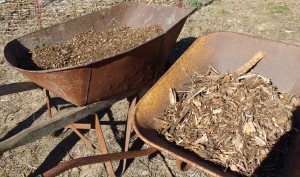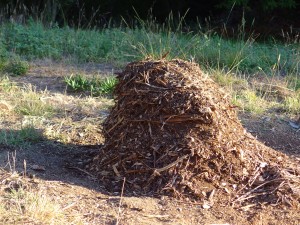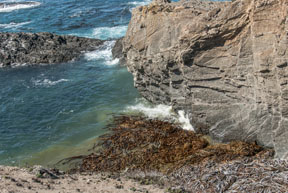Archive for November, 2013
Rain
This last month of our annual dry season, as grasses turn dusty brown and the trees droop, a phrase from a Gerard Manley Hopkins poem has been running through my head: “Send my roots rain.” This week the first good downpour broke the drought. I found and reread Hopkins’s poem, and recognized in it the cry of every writer who, like myself, goes through a dry spell and pleads for the rain of words and ideas.
Hopkins’s sonnet begins as a Job-like argument with God. He is angry that “sinners’ ways prosper” while he, a Jesuit priest who spends his life “upon thy cause,” sees his every endeavor end in disappointment.
The tone shifts in the second part of the sonnet. Hopkins points out the exuberant natural world:
See, banks and brakes
Now, leavèd how thick! lacèd they are again
With fretty chervil, look, and fresh wind shakes
Them; birds build …
He compares these images with his own struggles. He does not build, he says,
but strain,
Time’s eunuch, and not breed one work that wakes.
Hopkins sold himself short, of course. His poems continue to waken in the minds of later generations. But that sense of self-doubt is one all writers share. Whatever our spiritual beliefs, we can join in the prayer of Hopkins’s closing line:
Mine, O thou lord of life, send my roots rain.
You can read this sonnet, and link to other poems by Hopkins, at http://www.poetryfoundation.org/poem/173669
Battle of the Rose Roots
I should have learned from experience. Years ago, I wondered why plants near a hedge in my Palo Alto garden weren’t doing so well, in spite of soil amendments, regular watering, and other tender loving care. Investigating closer, I found that below the soil surface was a dense mass of tiny white roots. The nourishment stealer was a Banksia rose that had flourished in the hedge for fifty years.
You would think I’d learn and remember. But no … As we designed a deer-fenced vegetable garden for our new home on the edge of the forest in Mendocino, we decided that a covered gate, an English lych-gate, would be a charming touch. And wouldn’t it be romantic to have a rose climbing over it? I’ve always been fond of “Mrs. Cecille Brunner” with its exquisite miniature pink buds.
I planted a climbing “Mrs. B” in a half wine barrel just inside the gate, out of the deer’s reach. Years passed. At a friend’s house I admired another pink climber. She told me its name, “Seven Sisters,” and offered a cutting. The local legend, she told me, was that this rose was originally brought to the Northern California coast by a Russian princess in the early 1800s. Possibly she was the well-born wife of Ivan Kuskoff, commander of the Russian American Company fur trading post at Fort Ross, whose house is still standing, and is now a National Historic Landmark. According to the story, Madame Kuskoff gave cuttings of “Seven Sisters” to friends, who gave cuttings to friends, and so it moved up the coast. I see it everywhere in the gardens of old coast homes, and have met the woman who gave my friend her cutting.
But I digress. Needless to say, my cutting of “Seven Sisters” also found a home in a wine barrel inside my fenced garden. It became a yearly task to prune these enthusiastic climbers before they totally blocked the sun from the vegetables.
This year “Seven Sisters” decided to bloom again just as I was getting out my pruning shears, so she’s still a wild tangle.
But tidy on top doesn’t mean disciplined underneath. This season I noticed that the vegetables in raised beds near the roses were stunted and sad. One scoop with the shovel showed the cause. Nothing for it but to dig out the entire bed.
There’s a layer of hardware cloth on the bottom to keep out the gophers (that’s another story). I’m hoping a couple of layers of weed cloth will deter the rose roots, at least for a few years. My friend, a Master Gardener, laughed when I told her. “You’re the eternal optimist, aren’t you?” she said.
Compost
I love the miracle of compost. There is a circularity to it, the way plants in their dying return nourishment to the soil that sustained their lives. I have compost bins, of course, wire frames in which I layer garden refuse, kitchen scraps and dry material. I compost vegetable matter only, because of our resident wildlife, and keep a wire mesh lid on the currently active bin. It’s not entirely satisfactory. I cannot raise a hot enough temperature to kill all the weeks seeds. I’m envious of our local Mendocino Coast Botanical Gardens, which receives regular donations of spent grain and hops from nearby North Coast Brewing Companyto boost their compost processing temperature.
Right now I’m digging out my favorite kind of compost, a huge pile of chippings from a neighbor’s tree trimming and bush pruning that has sat in the meadow behind the house for about three years. The chippings were not great. Even now, the pile contains a lot of sticks, which I have spread under my orchard trees. They’ll decompose in time, and meanwhile provide some deterrent to the meadow grasses.
Sieved out from the sticks is the treasure: rich black compost, free of weeds, to spread as mulch around the garden. The plants are smiling.
Wave/Rock
I’m jealous of Scottish visual poet Ian Hamilton Finlay.
Last Sunday morning I walked on the cliffs at Chapman Point, just south of Mendocino. Tony, who does the graphics for Mendocino Coast Writers Conference, was taking photographs that might become next year’s program cover or a display ad in Poets & Writers magazine . I contemplated spume lifting from waves as they rolled in steady rhythm against the rocks, and thought about words I might use to convey the sense of transience that pervades this dramatic boundary between earth and sea.
Back home, I started making a list: undercut, backwash, swirl, surge, strata, submerge, carve, crevice, recede, collapse, uplift, unrest, rockfall, bull kelp, blueness, sheer … A few lines started to appear:
In the curve of the undercut
at the cliff’s base
the shape of wave
I decided to let the lines sit for a while and turned to another project. My friend Mary Marcia Casoly had recently sent a link to an anthology, Shadows of the Future: An Otherstream Anthology containing two of her poems. “Vispo,” she called them, visual poetry. Not a form I knew much about, so I Googled it and found a number of sites that had definitions and examples. Visual poetry, I learned, is “poetry that cannot suffer any translation into alternative visual or typographic form without sacrificing some of its meaning and integrity… The ‘quality of presence’ we get from the work depends on visual means, such as typefaces, format, spatial distribution on the page, or the physical form of the book or book object.” (Johanna Drucker)
I opened an example at random. Immediately my entire afternoon at my desk was washed out to sea. Before me was Ian Hamilton Finlay’s “Wave/Rock” from Aspen #7. Just two words repeated: the brown rockrockrock stacked on top of each other so that the near-vertical strata are visible; the blue wave words spread and broken as they crash against the rocks.
